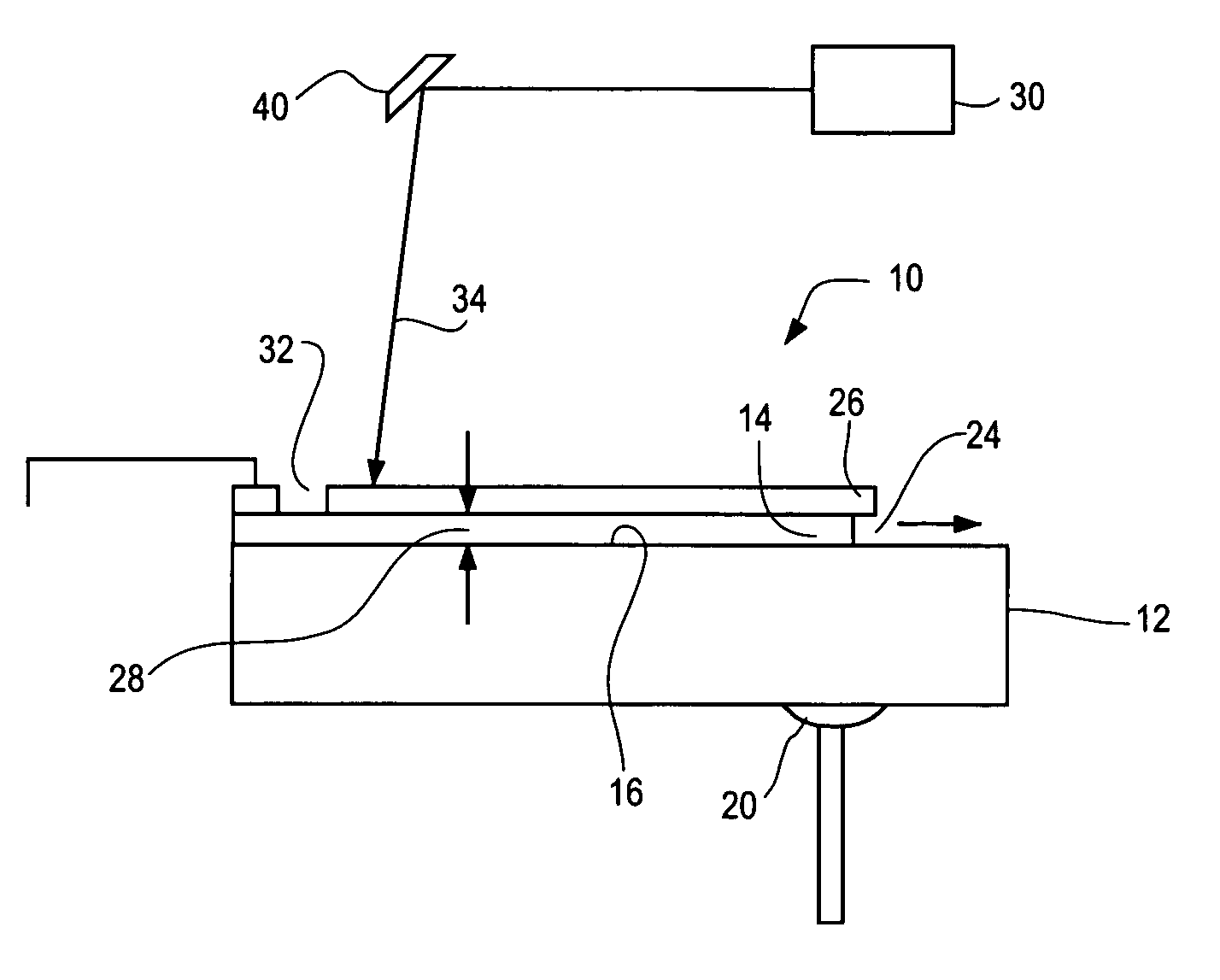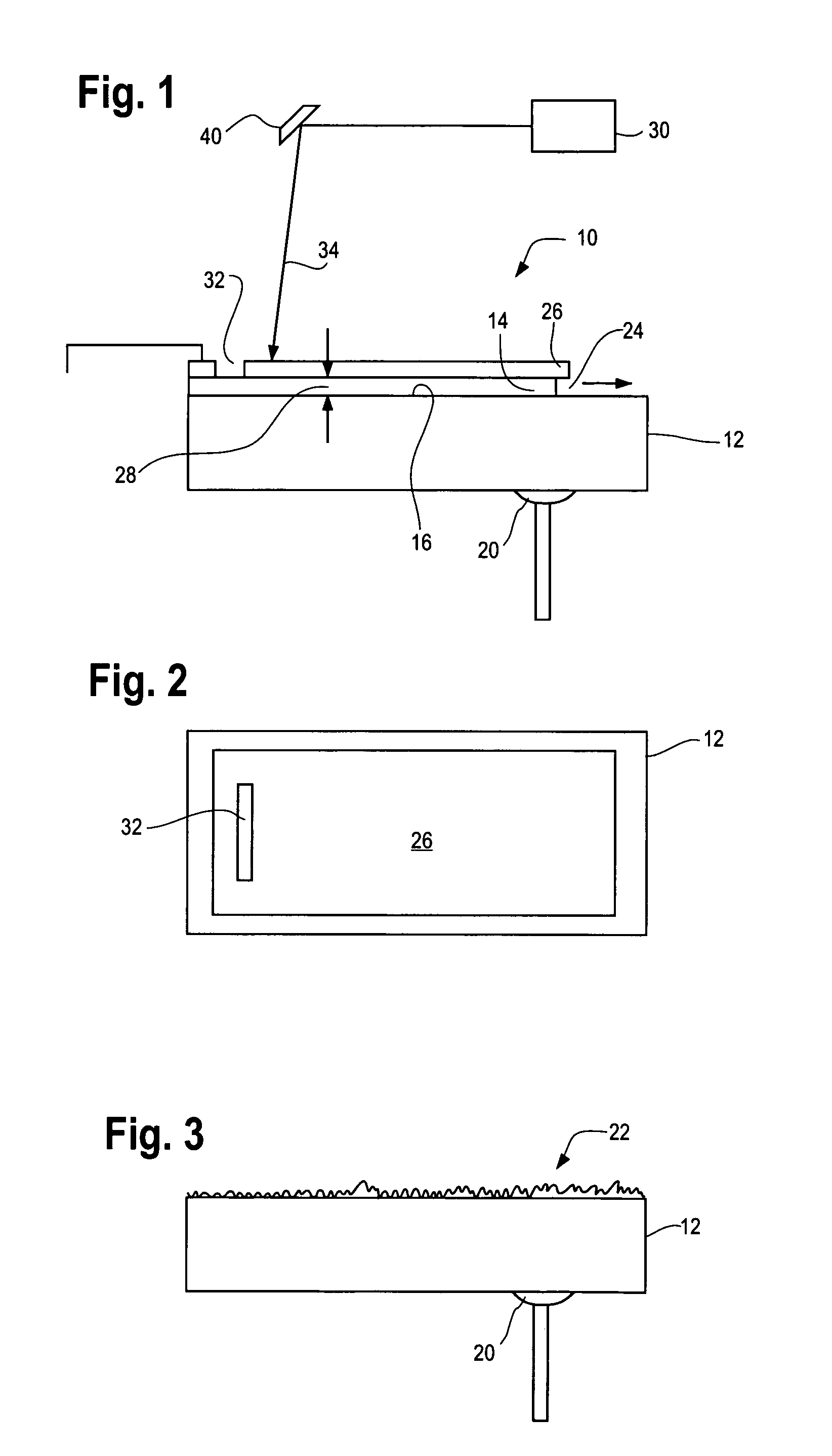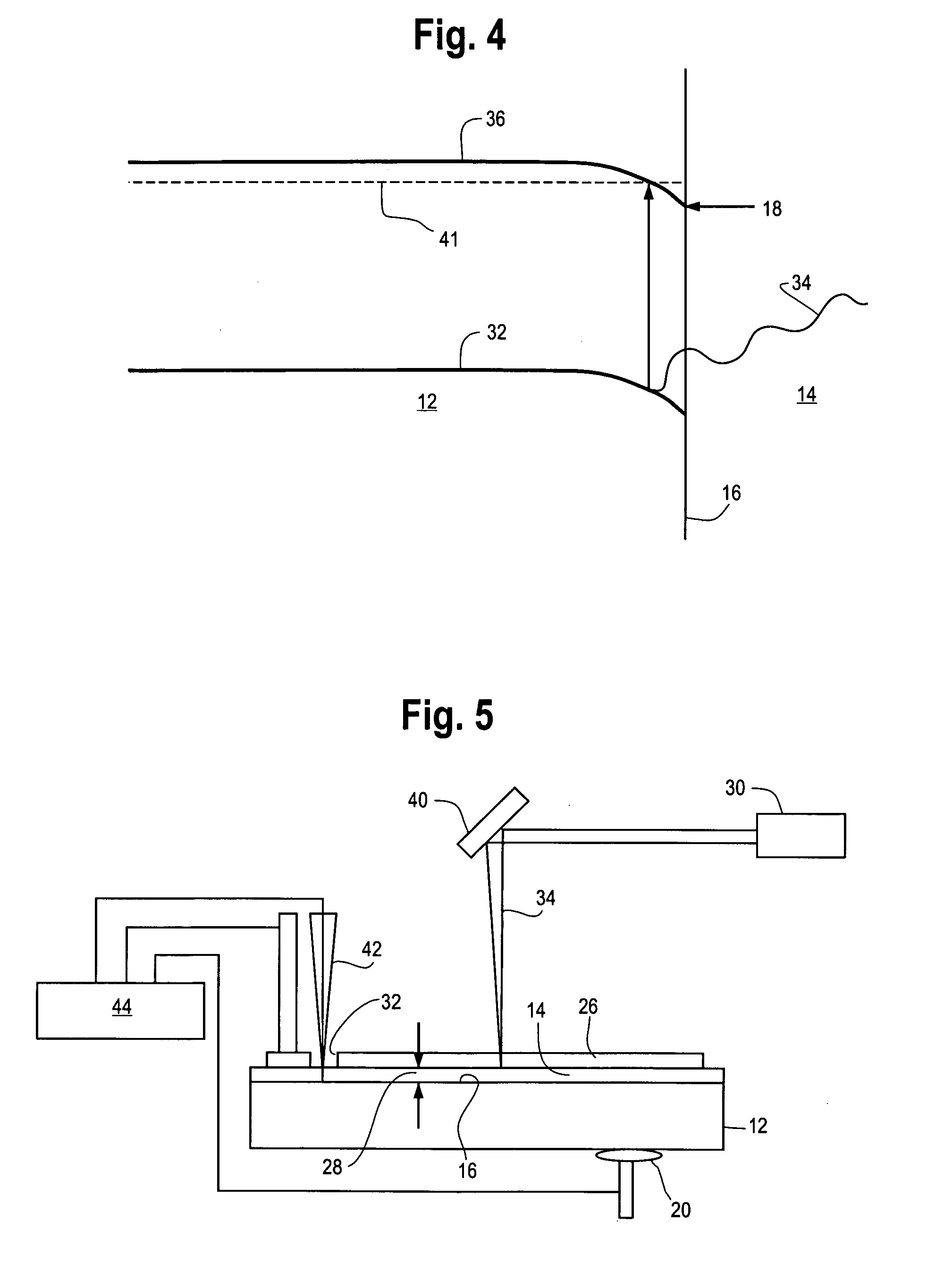Photoelectrochemical molecular comb
- Summary
- Abstract
- Description
- Claims
- Application Information
AI Technical Summary
Benefits of technology
Problems solved by technology
Method used
Image
Examples
Embodiment Construction
[0022]The novel method utilizes an electrolyte buffer sandwiched between a semiconductor substrate and a transparent counter electrode to complete an electrical circuit between the semiconductor and the transparent counter electrode. When the semiconductor is in contact with an electrolyte solution, a double layer of charge (dipole layer) is well-known to be established at the interface.
[0023]Proper biasing of the semiconductor-liquid interface results in the subsequent creation of a charge-depletion layer in the semiconductor. The biomolecule of interest is localized within a given spot area in the buffer between the semiconducting and conducting (but transparent) electrodes. Irradiation of the spot containing the biomolecules with a focused beam of photons of energy greater than the band gap of the semiconductor generates new charge carriers in the charge-depletion layer. The thereby-separated charge carriers reach the interface of the semiconductor and electrolyte and create a lo...
PUM
| Property | Measurement | Unit |
|---|---|---|
| Electrical conductivity | aaaaa | aaaaa |
| Electrical resistance | aaaaa | aaaaa |
| Electrical conductor | aaaaa | aaaaa |
Abstract
Description
Claims
Application Information
 Login to View More
Login to View More - R&D
- Intellectual Property
- Life Sciences
- Materials
- Tech Scout
- Unparalleled Data Quality
- Higher Quality Content
- 60% Fewer Hallucinations
Browse by: Latest US Patents, China's latest patents, Technical Efficacy Thesaurus, Application Domain, Technology Topic, Popular Technical Reports.
© 2025 PatSnap. All rights reserved.Legal|Privacy policy|Modern Slavery Act Transparency Statement|Sitemap|About US| Contact US: help@patsnap.com



